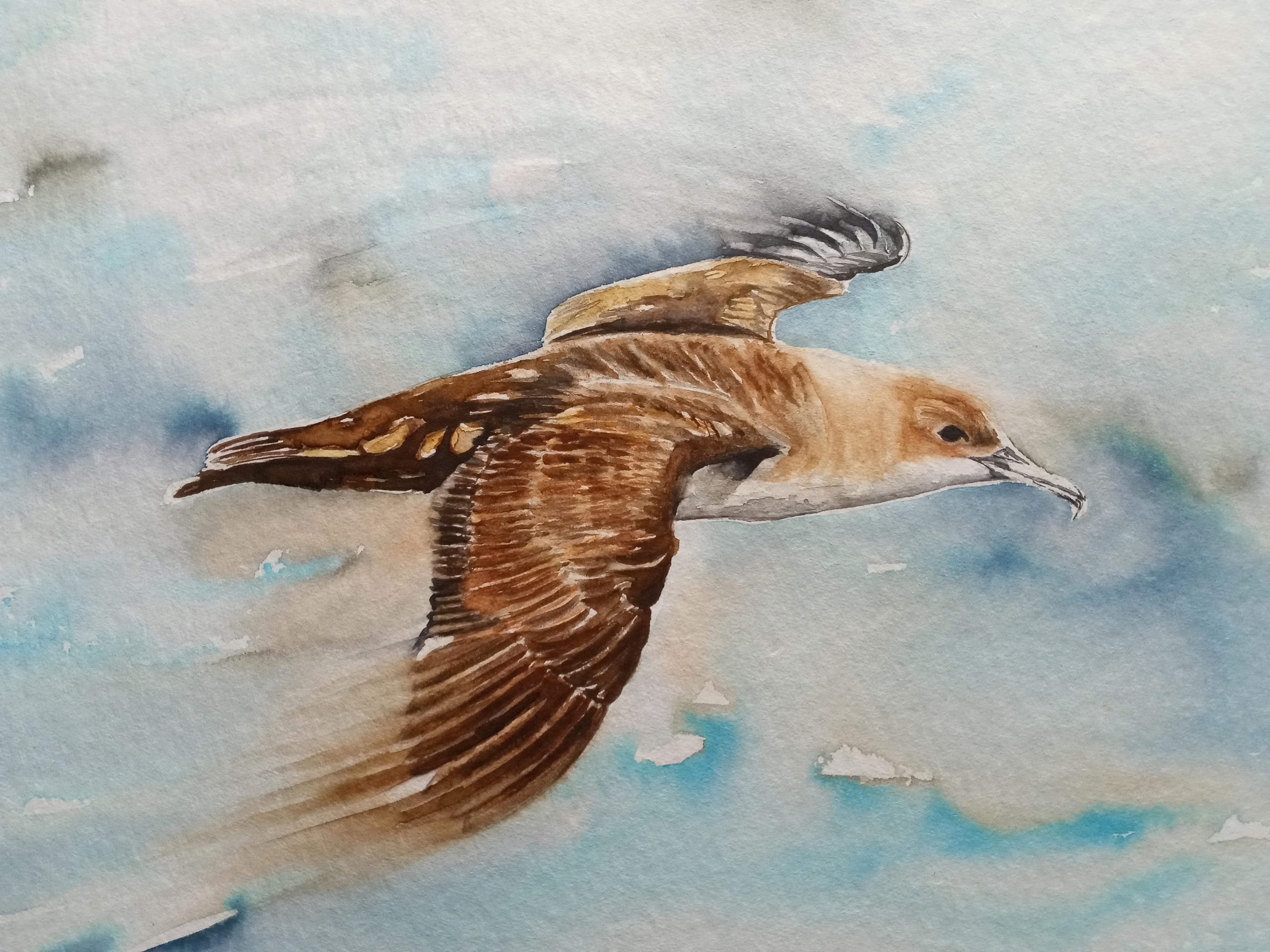
Balearic Shearwater watercolour by Helen Worthington, from a photograph by Pep Arcos
Jessica Phillips (Department of Zoology, Oxford University, UK) and colleagues have published open access in the journal Ecology and Evolution on at-sea observations of Critically Endangered Balearic Shearwaters Puffinus mauretanicus in UK waters.
The paper’s abstract follows:
“Aim. Europe's only globally critically endangered seabird, the Balearic shearwater (Puffinus mauretanicus), is thought to have expanded its postbreeding range northwards into UK waters, though its at sea distribution there is not yet well understood. This study aims to identify environmental factors associated with the species’ presence, map the probability of presence of the species across the western English Channel and southern Celtic Sea, and estimate the number of individuals in this area.
Location. The western English Channel and southern Celtic Sea.
Methods. This study analyses strip transect data collected between 2013 and 2017 from vessel‐based surveys in the western English Channel and southern Celtic Sea during the Balearic shearwater's postbreeding period. Using environmental data collected directly and from remote sensors both Generalized Additive Models and the Random Forest machine learning model were used to determine shearwater presence at different locations. Abundance was estimated separately using a density multiplication approach.
Results. Both models indicated that oceanographic features were better predictors of shearwater presence than fish abundance. Seafloor aspect, sea surface temperature, depth, salinity, and maximum current speed were the most important predictors. The estimated number of Balearic shearwaters in the prediction area ranged from 652 birds in 2017 to 6,904 birds in 2014.
Main conclusions. Areas with consistently high probabilities of shearwater presence were identified at the Celtic Sea front. Our estimates suggest that the study area in southwest Britain supports between 2% and 23% of the global population of Balearic shearwaters. Based on the timing of the surveys (mainly in October), it is probable that most of the sighted shearwaters were immatures. This study provides the most complete understanding of Balearic shearwater distribution in UK waters available to date, information that will help inform any future conservation actions concerning this endangered species.”
Reference:
Phillips, J.A., Banks, A.N., Bolton, M., Brereton, T., Cazenave, P., Gillies, N., Padget, O., van der Kooij, J., Waggitt, J. & Guilford, T. 2021. Consistent concentrations of critically endangered Balearic shearwaters in UK waters revealed by at‐sea surveys. Ecology and Evolution doi.org/10.1002/ece3.7059.
John Cooper, ACAP Information Officer, 08 February 2021

 English
English  Français
Français  Español
Español